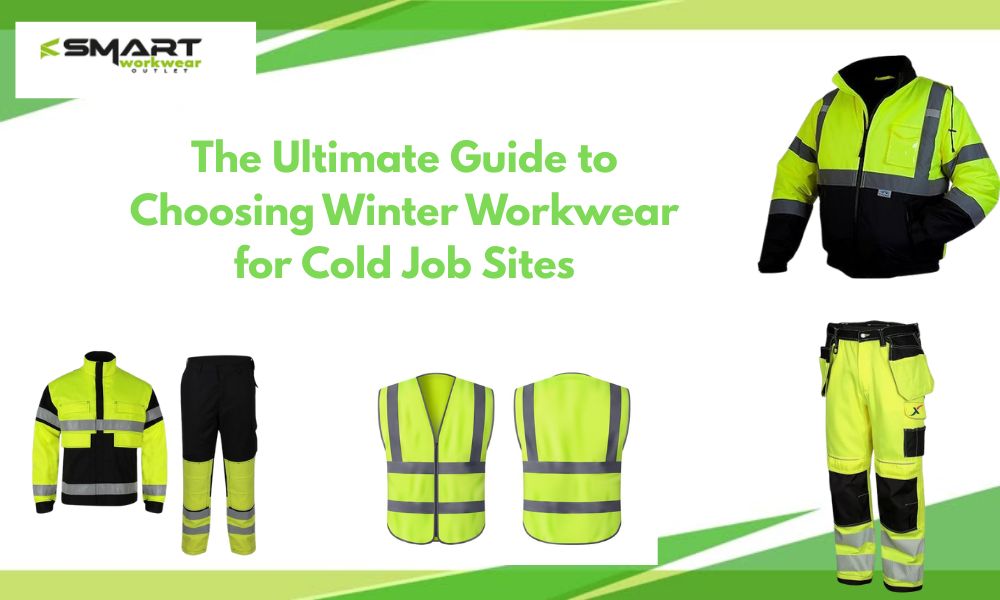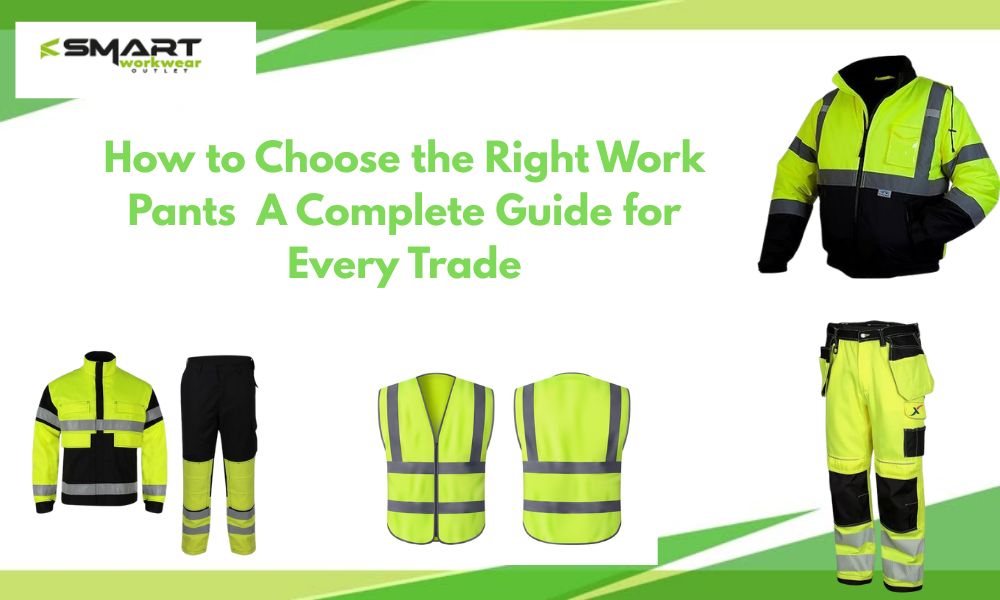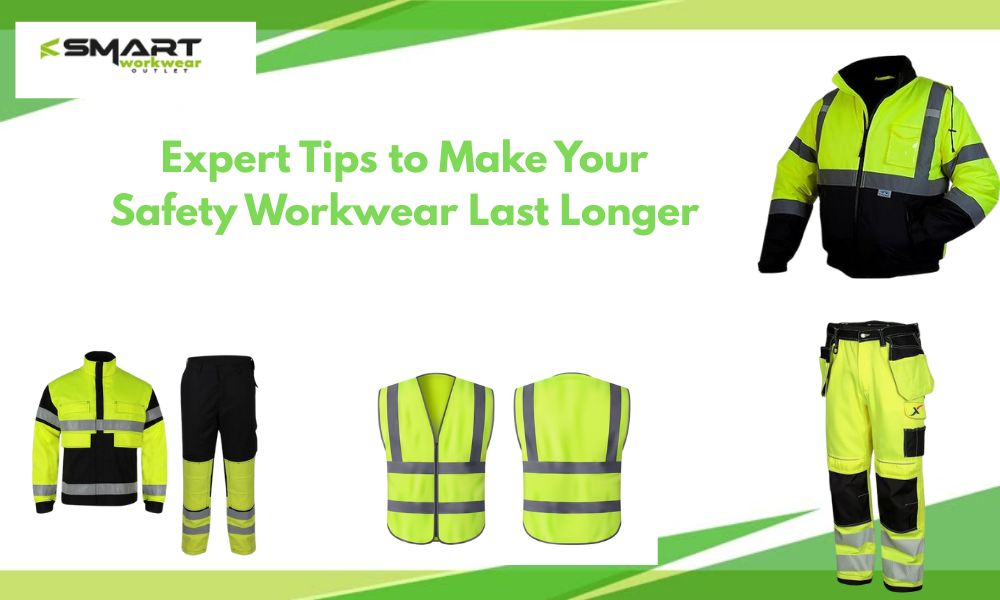
The Ultimate Guide to Choosing Winter Workwear for Cold Job Sites
Working in cold environments is not comfortable, but it can also be hazardous. Bad weather, not only low temperatures and wind chill, but also moisture, can have an extremely detrimental impact on your performance, health, and safety. Be it the construction site where you have to lay bricks on a cold, frosty day, or it is the logistics out in the open and you are handling that, or it is the road cleaning aspect of winter where you are cleaning the road, the proper dressing can be the difference between an emergency and hospital treatment.
This is why investing in high-quality winter workwear is not a question of taste but rather need. This manual is aimed at making you select functional, protective, and comfortable clothing, which is suitable for working in severe winter temperatures.
Understand the Risks and Work Environment
It is worth noting that before selecting winter gear, one has to be familiar with the risks that the job is exposed to. Frostbite, hypothermia, decreased motor response, and concentration loss are considered cold-related hazards. As the body temperature falls, physical performance and decision-making skills decrease too- this is a very deadly combination in a high-risk environment.
Additionally, your work environment plays a critical role. Ask yourself:
-
Are you exposed to open winds or insulated spaces?
-
Is there direct contact with snow, rain, or wet surfaces?
-
Are you physically active or more stationary?
All these influence the extent to which your working clothes should be insulating, flexible, and weatherproof.
From lightweight layers to heavy-duty outerwear, our jackets are made to meet the demands of every season and task.
The Importance of Layering
Best work wear in winter is not one thick jacket and heavy trousers. Dressing up cold job sites can best be done by way of proper layering. The method constricts heat, enables moisture control, and enables mobility.
Base Layer – Moisture Management
Begin with a base layer that is cotton-like and has some sweating ability. Clothes made of such fabrics as merino wool or modern synthetics keep skin dry and moderate temperature. Avoid stuff made of cotton since it tends to absorb moisture and remain cold.
Mid Layer – Insulation
The middle layer is an insulation layer. To keep warm, it collects body heat with fleece, quilted synthetics, or even light down. This layer should be of the kind and thickness according to the activity level you are undertaking, together with the conditions you will be outside.
Outer Layer – Protection Against Elements
Your shell outward should be windproof, waterproof, and vented. Jackets made in coated nylon or weather-resistant membrane fabrics are worth looking for. If you have to work in dark or busy surroundings, then high-visibility details and reflective bands are a must.
Whether on the job or off-duty, our trousers and shorts deliver the perfect fit for any work environment.
Material Matters: Durability, Comfort, and Technology
Workwear material is not concerned with touch but is about safety and durability, and comfort.
Insulating Fabrics such as fleeces and Thinsulate(TM) are excellent to keep the heat in without making them bulky. In wet weather, choose a material that repels water, but lets the sweat out.
Softshells and Ripstop Polyester are a mixture of strength, hydrophobic, and brittle nature.
FR (Flame-Resistant) materials may be required in certain industrial or welding environments.
For added performance, modern winter gear often features:
-
Breathable membranes to release internal moisture.
-
Taped seams for full waterproofing.
-
Reinforced stress zones to prevent tears at knees, elbows, and pockets.
From kitchens to care homes, our aprons and tabards offer practical protection and all-day comfort.
Visibility and Safety Features
When daylight is poor and there is fog, it brings about high chances of accidents, particularly when flanked by heavy equipment or even motioning vehicles. That is why high-visibility clothing becomes a piece of winter clothing.
Look for garments with:
-
Bright colors like neon yellow, orange, or red.
-
Reflective strips placed around the torso, arms, and legs.
-
EN ISO 20471 compliance (for European workers) or ANSI 107 standards (for US workers).
High vis outer layers must also be waterproof and warm. A warming jacket that lets you see nothing when it is dark is not a solution, but a risk.
Our stylish scrubs and tunics combine practicality with a polished look, perfect for medical and care professionals.
Footwear and Accessories
It is important not to forget about your core warmth; however, failure to take care of your extremities may result in discomfort or cold wounds. The appropriate winter shoes and accessories can spare the chance of being unable to move between environments and general heat.
Insulated, Waterproof Boots: Select the boots that have insulated lining and waterproof surfaces. Non-slippery bottoms are necessary on slippery ice, and according to the area, going to work requires steel or composite toe caps, which will not compromise comfort.
Work Gloves: Hand warmers have to be found between comfort and ability. Wet contamination is minimized by waterproof fabrics that have a textured grip control to stabilize performance even when it is freezing rain or in snow.
Ensure maximum visibility and safety with our high-performance hi-visibility jacket collection for all work environments.
Thermal Hats and Socks: The head loses about 10 to 15 percent of body heat. Heat loss can be minimised by wearing a thermal or a fleece-backed balaclava. Socks made of a wool blend manage to wick as well as keep the feet warm.
Extra Add-Ons
-
Neck gaiters or buffs to protect the throat.
-
Heated insoles or toe warmers for extreme cold.
-
Base-layer leggings under trousers for added insulation.
Practical Measures Beyond Clothing
Though the best equipment is a big plus, off-site tactics are used to a large extent to remain safe and productive.
Promote work-rest schedules, particularly on bitterly cold days. Hot drinks and covered warming should be offered to the employees. It is also important to ensure that one is hydrated even in cold weather to avoid cold stress caused by fatigue and dehydration.
Layer up in style with our versatile range of gilets and bodywarmers, perfect for outdoor comfort and mobility.
In case of new introductions to the team, it is very important to allow the staff time to develop a gradual adjustment to the cold working environments instead of working full shifts outside. Train the personnel in identifying the symptoms of hypothermia and frostbite early.
Care and Maintenance of Winter Workwear
Work shirts are an investment, and it is like any other type of investment; it will need care and attention.
-
Clean garments according to manufacturer instructions to avoid damaging waterproof coatings or insulation layers.
-
Inspect seams, zippers, and reflective materials regularly for wear and tear.
-
Dry thoroughly before storage to prevent mold and material breakdown.
-
Replace items that have lost insulation capability or have visible damage, especially boots and gloves.
By taking care of your winter gear, you extend its lifespan and maintain its effectiveness across seasons.
Layer up in style with our versatile range of gilets and bodywarmers, perfect for outdoor comfort and mobility.
Matching Gear to Job Role and Budget
Not every winter workwear is the same. It is based on the job that you do that makes certain features more imperative than others. These are in brief:
|
Job Type |
Key Workwear Features |
|
Construction (active) |
Lightweight insulation, flexible shell, breathable fabric |
|
Security or traffic control |
High-visibility, waterproof outerwear, thermal gloves |
|
Logistics/warehousing |
Mid-layer fleece, thermal base layer, anti-slip footwear |
|
Road maintenance (stationary) |
Heavy insulation, windproof coat, heated accessories |
|
Welding/metal work |
FR-rated gear, insulated leather gloves, protective boots |
Short-sighted cost reductions are also tempting, but high-quality workwear is rewarded with long life, comfort, and safety. Businesses such as Smart Workwear provide a vast proportion of cold-weather products that meet the necessities of protection, comfort, and value to individuals and large companies.
Conclusion
Many industries do not get a choice to work in the cold weather, but they do get a choice on whether it will be uncomfortable, dangerous, or unprepared. Your winter work experience can turn out to be safe rather than dangerous with the sensible considerations of the layers, intelligent clothing materials, eyesight defense, and suitable footwear.
Being warm is not the only thing it takes to have the right winter workwear; you need to be seen, moveable, and safe. Assess your location, know your requirement,s and buy equipment that hustles as much as you do. To find a large selection of quality winter clothing customized to meet tough working conditions, get to Smart Workwear and brace yourself to hit the cold spot on.







